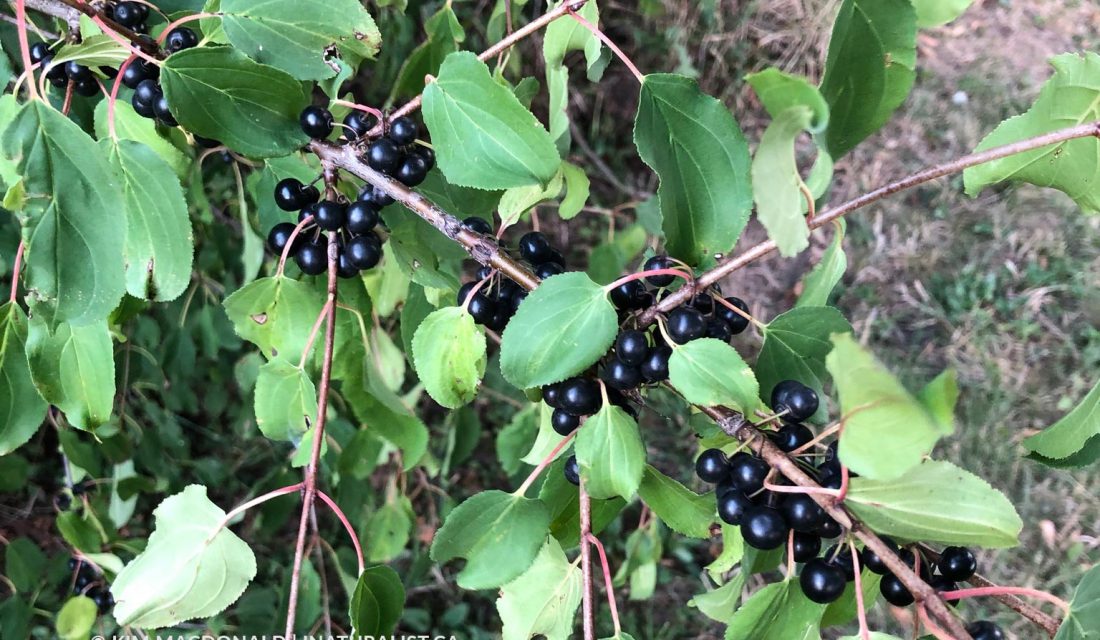Science in Action: Random Find on iNaturalist Leads to Huge Discovery | La science en action : une observation fortuite dans iNaturalist mène à une découverte d’importance
Picture this: a person walks past a tree with a leaf that has been obviously chewed by an insect.
They snap a photo of a pretty distinctive zigzag pattern that it made and posts it on iNaturalist.ca. The person has no idea what it might be and hopes maybe the iNaturalist community might be able to help.

Observation by Alain Hogue
The observation catches the attention of an entomologist who then shows it to an expert in Germany and another in the United States. Turns out this random find is the discovery of the first ever occurrence of the invasive Elm Zigzag Sawfly in North America. As if elm trees needed another pest to deal with after Dutch Elm Disease having worked away on these trees since the 1940’s.
The agency in charge of invasive species that attack plants (the Canadian Food Inspection Agency, aka CFIA) caught wind of this find. In response, it set up monitoring traps and confirmed the presence of the insect. On the observation post, the Agency thanked the iNaturalist observer.
“We are looking into its distribution in Canada. iNaturalist community has been tremendously helpful!” ~Natural Resources Canada
Natural Resources Canada has published information about the Zigzag Sawfly and this find in their Simply Science magazine to encourage others to keep an eye out for this potential pest. This species naturally occurs in Asia and was found to be introduced in Europe in 2003, where it has since become established.
The Value of iNaturalist
This is iNaturalist in action. Its participants are helping Canada’s wildlife. Even a seemingly insignificant observation can lead to a major discovery.
Detecting new invasive species early on before they take hold is critical to curb their spread before they become unmanageable.
As for the observer, he has inspired others (including a scientist at the Montreal Insectarium) to take a second look at elm leaves. There are now 13 observations of the Elm Zigzag Sawfly in North America, all centered around southern Quebec.
We can all help track and curb the spread by checking any elm leaves you see and reporting these distinctive zigzag patterns using iNaturalist.ca or the free iNaturalist app.
Beyond that, all your observations contribute to the knowledge of Canadian biodiversity. You never know when one of your observations may turn out to be a momentous discovery.
Imaginez : vous passez à côté d’un arbre avec une feuille qui a été rongée par un insecte.
Vous prenez une photo du motif distinctif en forme de zigzag et vous la téléchargez dans iNaturalist.ca. Vous n’avez aucune idée de quoi il s’agit, et vous espérez que quelqu’un dans iNaturalist pourra vous aider.

Observation par Alain Hogue
L’observation retient l’attention d’un entomologiste qui la montre à un expert en Allemagne et un autre aux États-Unis. Il s’agit de la première occurrence en Amérique du Nord de la tenthrède en zigzag de l'orme, une espèce envahissante. Comme si l’orme avait besoin d’un autre fléau après avoir lutté contre la maladie hollandaise de l’orme depuis 1940.
L’organisme responsable des attaques d’espèces envahissantes contre les plantes indigènes (l’Agence canadienne d’inspection des aliments – ACIA) a eu vent de l’observation. En réponse, il a installé des pièges et a confirmé la présence de l’insecte. L’ACIA a même remercié l’observateur dans iNaturalist.
« Nous examinons sa répartition au Canada. La communauté iNaturalist a été extrêmement utile. » Ressources naturelles Canada
Ressources naturelles Canada a publié de l’information sur la tenthrède en zigzag de l'orme dans le magazine La science simplifié pour encourager les gens à garder les yeux ouverts pour cet insecte potentiellement nuisible. Il s’agit d’une espèce indigène de l’Asie qui a été introduite en Europe en 2003, où elle s’est depuis établie.
La valeur d’iNaturalist
Cette histoire est une histoire d’iNaturalist en action. Les observations apparemment fortuites de particuliers téléchargées dans iNaturalist peuvent mener à des découvertes d’importance.
Il est essential de découvrir les nouvelles espèces envahissantes tôt, avant qu’elles ne s’enracinent ici.
L’observateur, quant à lui, a inspiré d’autres personnes (y compris un chercheur de l’Insectarium de Montréal) à observer les feuilles d’orme. Il y a maintenant 13 observations de tenthrèdes en zigzag de l'orme en Amérique du Nord, toutes dans le sud du Québec.
Nous pouvons surveiller l’infestation de cet insecte et la freiner en examinant les feuilles d’ormes et en téléchargeant nos observations dans iNaturalist.ca ou l’application gratuite d’iNaturalist.
Des plus, vos observations dans l’ensemble contribuent au corpus de connaissances sur la biodiversité canadienne. Vous ne savez jamais quand une de vos observations pourrait devenir une découverte monumentale!







